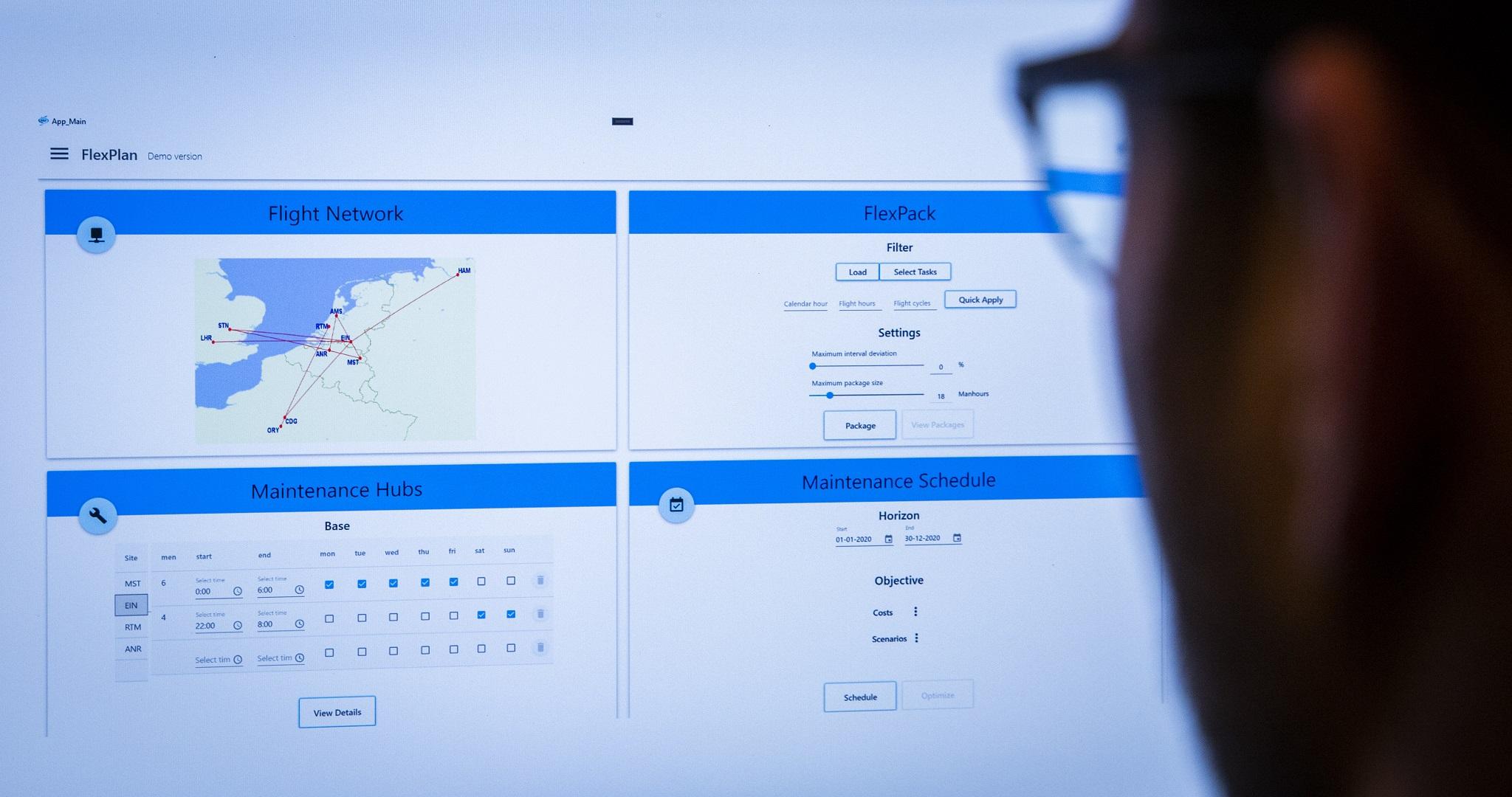Testing Artificial Intelligence for Optimized Maintenance Planning

The Netherlands Aerospace Laboratory (NLR) is developing an artificial intelligence (AI) based solution called FlexPlan to help operators more easily plan maintenance around their flight programs. NLR says it expects FlexPlan to boost aircraft availability by optimizing maintenance planning concepts to minimize out of service and preparation times.
“The idea started some time ago when we realized that if you look at the normal planning routines, airlines start to plan their maintenance visits—their A, B, C and D checks—and then they fly the aircraft in between,” explains Arjan de Jong, principal, NLR. “We wondered if we could change the pattern and create availability at the same time. We wondered if we could let an airline schedule its flights and then see if we could schedule the maintenance activities in between.”
FlexPlan’s AI algorithms use information such as maintenance planning documents, aircraft maintenance status, aircraft configuration, flight schedules and available maintenance facilities to break tasks into logical clusters based on criteria such as maintenance intervals or whether they need to be carried out in the same zone. The clusters are then automatically put together into work packages that can be fit in between flights and updated if last-minute changes in the flight schedule occur. NLR notes that FlexPlan adheres to task intervals specified by the OEM, so operators will not face regulatory issues using the system.
According to de Jong, the system is advantageous compared to traditional maintenance planning software not only because it gives operators full flexibility to schedule flights, but also because it is designed to reduce the time spent manually creating aircraft maintenance programs. This, he says, results in higher productivity and an optimized schedule.
FlexPlan is still in the experimental stage and de Jong says NLR has been in talks with a number of airlines about its development. NLR has been performing case studies using airline data and de Jong says tests so far look “quite promising.”
Before the software is market ready, de Jong says FlexPlan will need some development over the next year or so to make it more robust. “A lot of things are fluid in airline operations. A lot of unexpected things happen, so you need to have a plan that you can alter at the last moment to make it robust,” he says. “We are working on that piece to make sure that we can adjust or alter our long-term planning and make last minute changes so that, for example, an AOG doesn’t disturb the maintenance activities. We need to be able to adjust our planning at the last moment to cater for the unexpected.”






